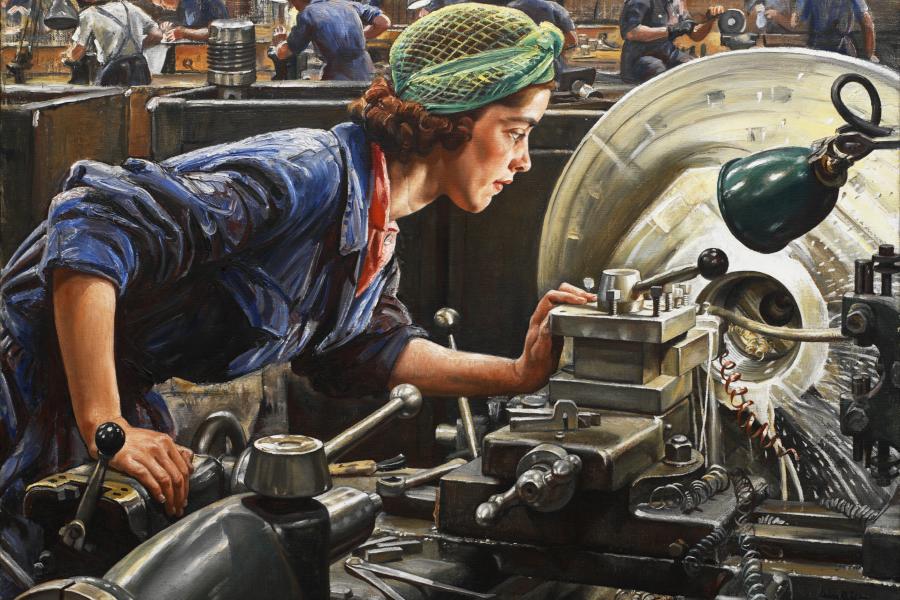How does this encounter make you feel?

A breech ring turns, screwed by Ruby Loftus,
1943
-
Bright emotions
-
Not at all Extremely
-
-
Quiet emotions
-
Not at all Extremely
-
-
Heavy emotions
-
Not at all Extremely
-
-
Sombre emotions
-
Not at all Extremely
-
Compare yourself to others
Choose different variables below, and see the patterns of response reflected in the circle of emotion above. Your responses are the coloured wedges. Others' responses are averaged in the spider graph of lines and dots.

Date: 1943
Creator of the image: Laura Knight Date of the image creation: 1943 Medium: Oil on canvas Person depicted: Ruby Loftus In 1943 the British Ministry of Supply was concerned at the level of disaffection and absenteeism of the women who worked in the armament factories. As a result, the War Artists Advisory Committee commissioned Laura Knight (1877–1970) to create an artwork that could reverse this trend and bolster female recruitment into the ordnance factories. Knight’s artwork Ruby Loftus Screwing a Breech Ring was the result. It depicts Ruby Loftus (1921–2004) working an industrial lathe to fashion a component of a double-barrelled anti-aircraft gun. This was quite a technically demanding task, for any lack of precision in its production could cause the weapon, which was designed to fire twenty-five rounds per minute, to explode upon firing. This was clearly dangerous, as was operating such a machine without safety goggles. Apparently, during peacetime such a complicated task would only be performed by a man with upwards of eight years experience, yet apparently the 21-year-old Loftus mastered in in just a year or two. This ability was considered a great publicity coup at the time, however it has been suggested that she was placed at this specific machine precisely for that reason. Much as Loftus was depicted proving herself in a traditionally male environment, Knight had not previously attempted to paint industrial machinery, and her artwork was praised for its technical accuracy. The artwork was immediately very popular, and was reproduced in print and in newsreels, with Knight being interviewed by the BBC. She achieved instant fame. The artwork is now a part of the collection at Britain’s Imperial War Museum.